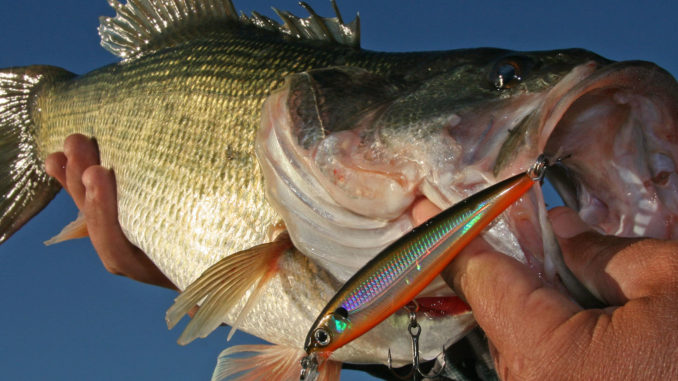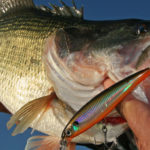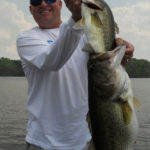
Feeding a bass that isn’t hungry is a real art
Much is written about bass and reaction strikes. Making a bass bite when it is not actively feeding is what separates a good fishing for a whole day from good fishing for a few minutes. Tricking bass into biting that are not in the “feeding mode” is one of the things that makes fishing so fun.
There are many cues to lures that make them appealing to bass: speed, shape, color, detail, rate of fall, action, surprise, direction, deflection, proximity to cover and I’m sure many more that don’t immediately come to mind. All influence whether a bass bites for ignores your offering.
You have to understand that most bass refuse your offering regardless of how you present it — that’s the discouraging thing about fishing. You are fishing for a tiny percentage of bass that might bite your lure on any given day. Also, you are after a moving target; they can and do move large distances sometimes daily. What you are trying to do is make the most of each day on the water and figure out small things that make big differences in your chances of catching a lot of bass. When it all clicks, there is nothing better.
Speed is most often associated with a reaction bite, but I’ve seen fish swim past a motionless lure and attack it with reckless abandonment while swimming past another lure. Was that a reaction to the look of the lure, or did something just click with that bass?
I think the element of surprise might be the best description of a way to get a reaction bite. Catching a bass off-guard by putting a lure right in front of its nose, such as flipping into heavy cover or having a cruising bass think it has suddenly come across something tasty.
The best way to learn how bass react to lures is to fish where you can see them. A clear farm pond, steam or lake when the fish are shallow. You may be retrieving a dark lure really fast, only to have them follow and turn away at the last minute. You can often change color and get them to commit. Other days, it is a direction change. You get the point —after many years of fishing, I’ve learned everyday is different. One day, lure speed might the most important, the next day looks. Most days, it’s trying to get as many cues about your lure and presentation exact. One tip I’ll give is that the first cast is the most important — it’s your best chance of a reaction.
It is tough to get a grasp of the behavior of bass when fishing a tough place. You need contact with a lot of bass regularly to get a feel for it. Going out and catching five bass in a day is not going to cut it. You can extract information about every bass that bites, but you need some positive reinforcement and lots of variety in conditions under many scenarios. Yes, there are many days when I would consider catching five bass a wonderful day, but for learning purposes, you need more.
Spend some time learning a changing tactics. If you are catching them really good on one bait, try something different to see if they like it even better or whether it turns them off. Fishing is always changing and staying ahead of the change is key to getting your next reaction bite.





Be the first to comment